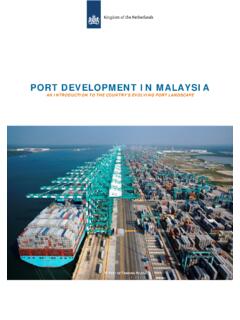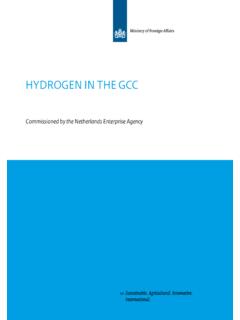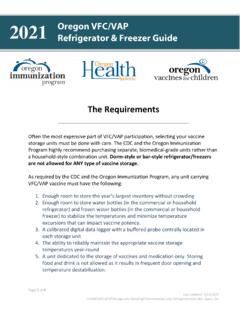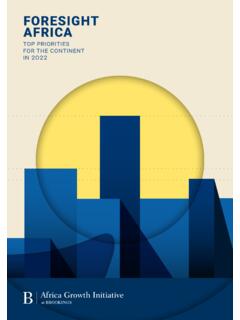Transcription of Tourism industry in Thailand - RVO
1 KoreaLatviaLithuaniaakuBrusselsGuangzhou KabulMuscatPortOfSpainStockholmTripoliBa makoBratislavaHanoiJubaakuBrusselsGuangz houKabulMuscatPortOfSpainStockholmTripol iBamakoBratislavaHanoiJubaTourism industry in Thailand | 1 |The number of visitors in Thailand is expected to increase in the coming years to more than 40 million by 2020. Most visitors will continue to come from the Asia Pacific region ( million in 2020), followed by European tourists ( million in 2020). The number of visitors from North-America is expected to increase to million, while the Middle East, Africa and Latin America make up for less than 2% of the total number of visitors in s capital city Bangkok is listed in the top 10 of the world s most attractive cities to visit and saw an increase in the tourists from China, USA, India and the Middle East.
2 The city has two air-ports (Suvarnabhumi Airport and Don Mueang Airport), a Skytrain (BTS), an underground (MRT) rail system and river boat services. Other established tourist destinations within Thailand are Phuket, Pattaya and Chiang Mai. As Thailand is facing increasing competition from neighboring countries such as Vietnam and Myanmar, the Thai government has made visa procedures easier. For Chinese and Indian visitors the Thai government introduced a six-month multiple entry visa and reduced the visa-on-arrival charges. In addition, for visitors from 19 countries Thailand waived visa fees, while visitors from 52 coun-tries, including the Netherlands, can stay up to 30 days in Thailand when entering via an international airport.
3 Tourists entering via land border checkpoints from neighboring countries are granted a maximum stay of 15 days. These lenient visa policies make Thailand an attractive country for both long term Tourism and short term visits. The the country s geographical location in the heart of main-land Southeast Asia and its relatively well developed infrastructure maks the country an important regional hub. The Tourism industry is one of Thailand s main economic sectors, accounting for 6-7% of its GDP. Revenue reached THB trillion (USD 71 billion) in 2016, with THB trillion coming from interna-tional markets and THB 870 billion from the domestic market.
4 Daily tourist spending reached THB per person last year and is expected to further increase in the coming years. The shift of focus by the Thai government to attract more quality tourists and the policy to end zero-dollar tours from China will support the revenue numbers forecasted for AirportsTo keep up with the rising tourist figures and to realise Thailand s ambitions to ba , the government is investing in expanding its air- Thailand has one of the most developed Tourism markets in Asia. The Land of Smiles , is known for it hospitality, beautiful beaches, historical places and eco-attractions, its world-famous cuisine, good infrastructure and affordable accommodation.
5 In 2016 Thailand welcomed a record number of million visitors and is expected to will remain a prime tourist locations in the years to come. The sector also provides interesting business opportunities for Dutch businesses active in this sector.| 2 |ports and building new ones. With the strategic location of Thailand being in the center of Asia, the government has made it a priority to turn the country into the logistics hub of Asia and making Bangkok an aviation hub to rivals Hong Kong and June 2016 the state-owned Airports of Thailand (AOT) announced its plans to invest THB 194 billion (USD billion) over the next 15 years to expand its airports. These include Suvarnabhumi Airport, Don Mueang International Airport, Phuket International Airport, Chiang Mai International Airport, Hat Yai International Airport and Chiang Rai International Airport.
6 The six airports all together are expected to serve 150 million passengers by 2030. The expansions of the airports are highly needed as many have reached their maxi-mum capacity. In 2014, Phuket airport and Don Mueang airport already exceeded their capacity, while Suvarnabhumi airport had a utilization rate of 87% in that year. Suvarnabhumi airport, also known as Bangkok International Airport, is one of the busiest airports in the world. The airport s capacity will be enhanced from 45 million to 60 million passengers annually. Aside from lifting the capacity of passengers, a third run-way will be built worth THB 19 billion. In terms of passenger num-bers, the airport ranks in the top 20 worldwide.
7 M, Bangkok s older airport, receives more than 20 million passengers yearly. The air-port will expand to 30 million annually. At Phuket International Airport a new international terminal was opened in 2016, increasing the capacity to million passengers per year. In addition, a new international terminal is scheduled for the Royal Thai Navy-operated U-Tapao Rayong-Pattaya International Airport. The government is planning to turn the faci-lity into a third key choice for airlines. It is expected to serve 3 mil-lion passengers by 2018. The Ministry of Transport is also planning to build three new air-ports in the provinces of Uttaradit, Kanchanaburi and Sa Kaeo.
8 RailwaysIn addition to its international airports, Thailand has an extensive rail network. The country s railway network has a combined length of 4,043 km and is under provision by the State Railway of Thailand (SRT). Under the Thai Transport Infrastructure Development Plan 2015-2022, single tracks will be upgraded or transformed into dou-ble/triple tracks, which will enable trains to travel faster. In additi-on, plans have been developed for a modernized connection bet-ween Bangkok and Chiang Mai and a new light railway system in Phuket. The construction of this light railway system will start this year and will connect Phuket international airport with various tou-rist destinations on the island.
9 Other projects include a high speeds railway between Bangkok Hua Hin and Bangkok Rayong. The Thai government is also in dialogue with the Chinese govern-ment for the construction of a high-speed 873 km line through Laos. The high speed line will mainly transport Chinese tourists, manufactured goods from China and agricultural goods from Thailand . In 2012, the Mass Rapid Transit Authority of Thailand (MRTA) announced plans to develop six additional lines on Bangkok s urban railway system. The six lines are expected to cover a distance of 200 km and require a combined investment of THB 600 billion between now and 2020. One new line already entered in service in August 2016.
10 The km Mass Rapid Transit Purple Line connects Tao Poomn to Khlong Bang Phai station in Bang Yai and is expected to carry around passengers by 2019. Furthermore, the Thai cabinet approved a USD billion project in 2015 to extend Bangkok s Sky Train elevated rail line. RoadsThailand has a vast road network compared to its ASEAN neigh-bors. Roads are the dominant form of infrastructure, covering 86% of the country, compared with 2% rail networks and 12% ports. In total Thailand has kilometers of road networks, including 450 km of expressways. In 2013 the Transport Ministry presented an ambitious plan to invest THB 275 billion on expanding and repairing the country s road network.













